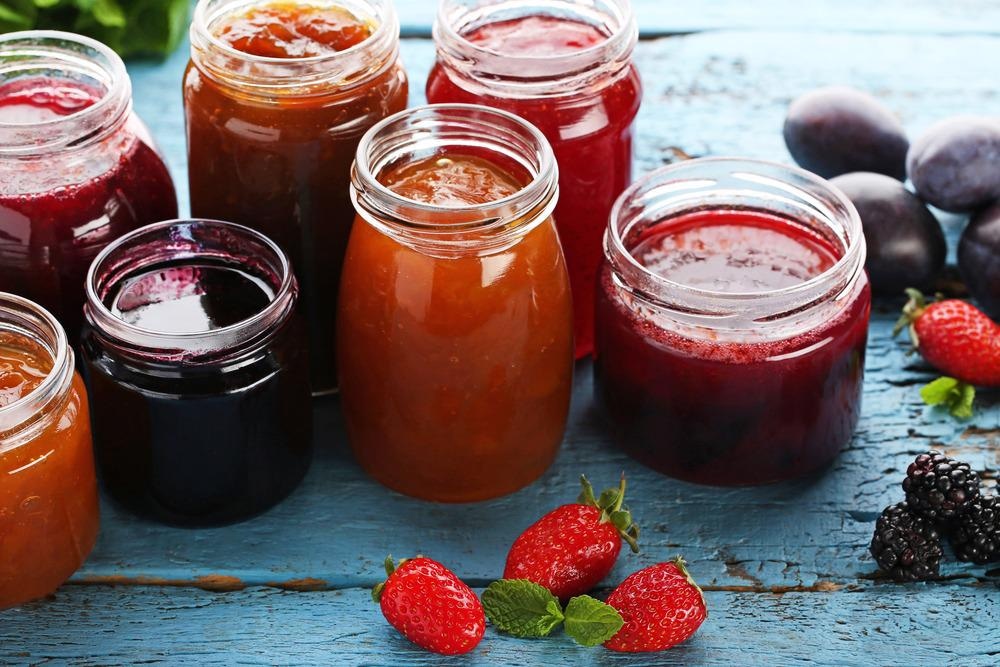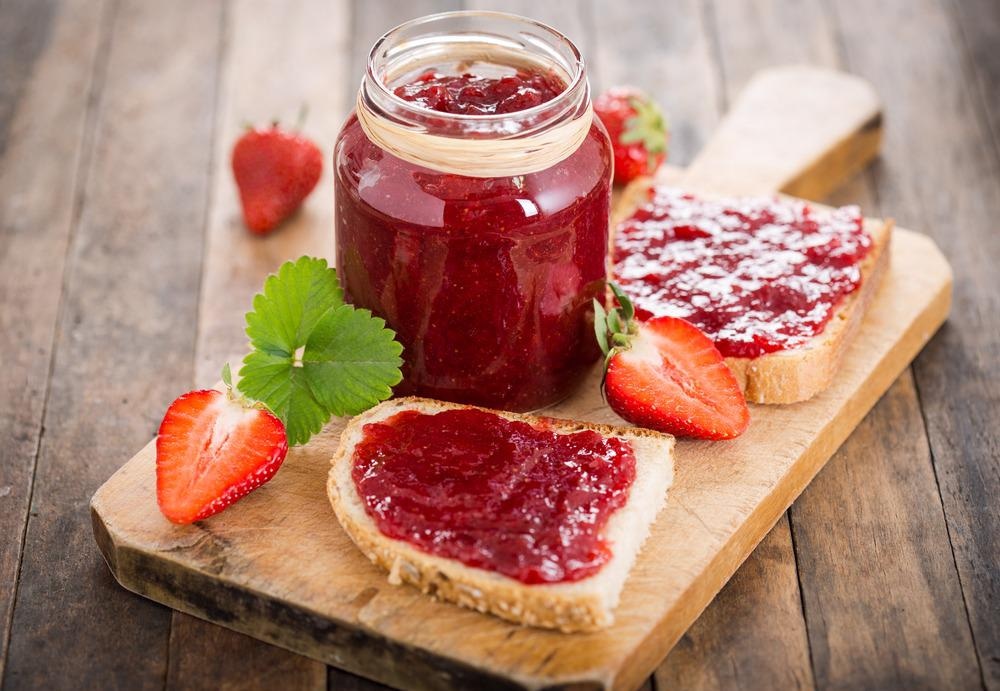Jam seems like a simple sweet treat to spread on toast, but the truth is there is a science behind perfecting the process of making this conserve. The pectins, sugar, and acids that are vital to jam all play important roles in creating the perfect flavor and consistency. Here, we take a brief look at how jam entered our pantries and how it is best made, according to science.

Image Credit: 5 second Studio/Shutterstock.com
A brief history of jam
Modern jam emerged as recently as the 19th century. Before this, the key ingredient of sugar had been too expensive and reserved only to make treats for the rich. For those who could afford it, preserves made from sugar were offered out on silver spoons to follow up a meal.
The first preserves made in Europe mixed honey with fruit pulp and left to dry in the sun. Quince was a fruit often used as it set the preserve well due to its high pectin content. In Greece, this preserve was known as melomeli and was thought to be an aphrodisiac. The British took this recipe and adapted it to incorporate pears, damsons, plums, and eventually Seville oranges to make marmalade. When sugar prices fell in the 17th-century marmalade became popular in Scotland. By the 1880s, jam had become popular among the working classes where it was being eaten on top of dark wholemeal bread.
Today, many factory-produced jams are considered to be more sickly than the traditional version. It seems that mass-produced products lean heavily on the sugar content but what, according to science, is the best way to make jam?
The perfect balance of pectins, sugar, and acids
Jam is made of three essential chemical entities: pectins, sugar, and acids. Pectins are long sugar molecules linked in chains that are vital to setting the jam. They occur naturally in the cell walls of plants, and, therefore, fruits provide a natural source of pectin
The process of boiling the jam releases the pectins contains in the fruit, and, with the addition of the correct amount of sugar and acids, the pectins bind to each other via intermolecular interactions to create a gel that is the basis of the jam’s consistency. Once allowed to cool, the structure of the gel traps in the water, give the jam a jelly-like consistency.
Although pectin naturally occurs in fruit, the level of pectin is not uniform across different varieties. For example, apples and blackcurrants are high in pectin, whereas strawberries and raspberries contain lower amounts. To make a jam from a low pectin fruit it is often paired with a higher pectin fruit to allow it to set properly. In commercially made jams, citrus peel is often added to boost pectin levels in jams using low pectin fruit.
Sugar is needed in high quantities in jam. It is important for its flavor but also to help the jam set. While many recipes recommend using the same amount of sugar as jam, science says different. Sugar is required to enhance the gel-forming capability of the pectin. It draws water to itself and in doing so, it prevents the pectin from forming separate chains. The sugar also works to preserve the fruit in the jam by pulling the water to bind with it leaving too few water molecules to support microbial growth. The final sugar content should be slightly higher than that advised by most recipes, equating to up to two-thirds of the jam.
Acids are the final essential ingredient for making jam. Like pectins, these are also found naturally in fruit. Usually, COOH groups in pectin act to prevent the pectin chains from forming a gel network due to the negative charges of the molecules (ionization), which causes repulsion. By adjusting the pH of the mixture, making it slightly acidic (in the range of 2.8-3.3), the ionization of the COOH groups is prevented, which allows the pectin chains to form in networks.
While fruits contain sources of acid, such as citric acid, magic acid, and tartaric acid, it usually is not present at levels sufficient to prevent ionization of the COOH groups. Therefore, additional acidity is usually provided by adding another source of acid, usually lemon juice although other forms can also be used. The key to adding any acidic ingredient is to get the jam to the correct pH.

Image Credit: pilipphoto/Shutterstock.com
Perfecting the balance
Overall, to make the best jam it is important to get the right levels of the three key chemical components: pectins, sugar, and acid. Sugar should be more than half of the final jam product which should also be slightly acidic. Understanding the science behind jam making and achieving this perfect balance is key to making the best jam.
Sources:
- Andy Connelly. (2013). The science and magic of jam-making. [Online]. Food.NDTV. Available at: food.ndtv.com/food-drinks/the-science-and-magic-of-jam-making-694284 Last accessed January 2022
- Raphaelides, S., Ambatzidou, A. and Petridis, D., 1996. Sugar Composition Effects on Textural Parameters of Peach Jam. Journal of Food Science, 61(5), pp.942-946. ift.onlinelibrary.wiley.com/doi/abs/10.1111/j.1365-2621.1996.tb10907.x
- Thakur, B., Singh, R., Handa, A. and Rao, M., 1997. Chemistry and uses of pectin — A review. Critical Reviews in Food Science and Nutrition, 37(1), pp.47-73. https://www.tandfonline.com/doi/abs/10.1080/10408399709527767
Further Reading